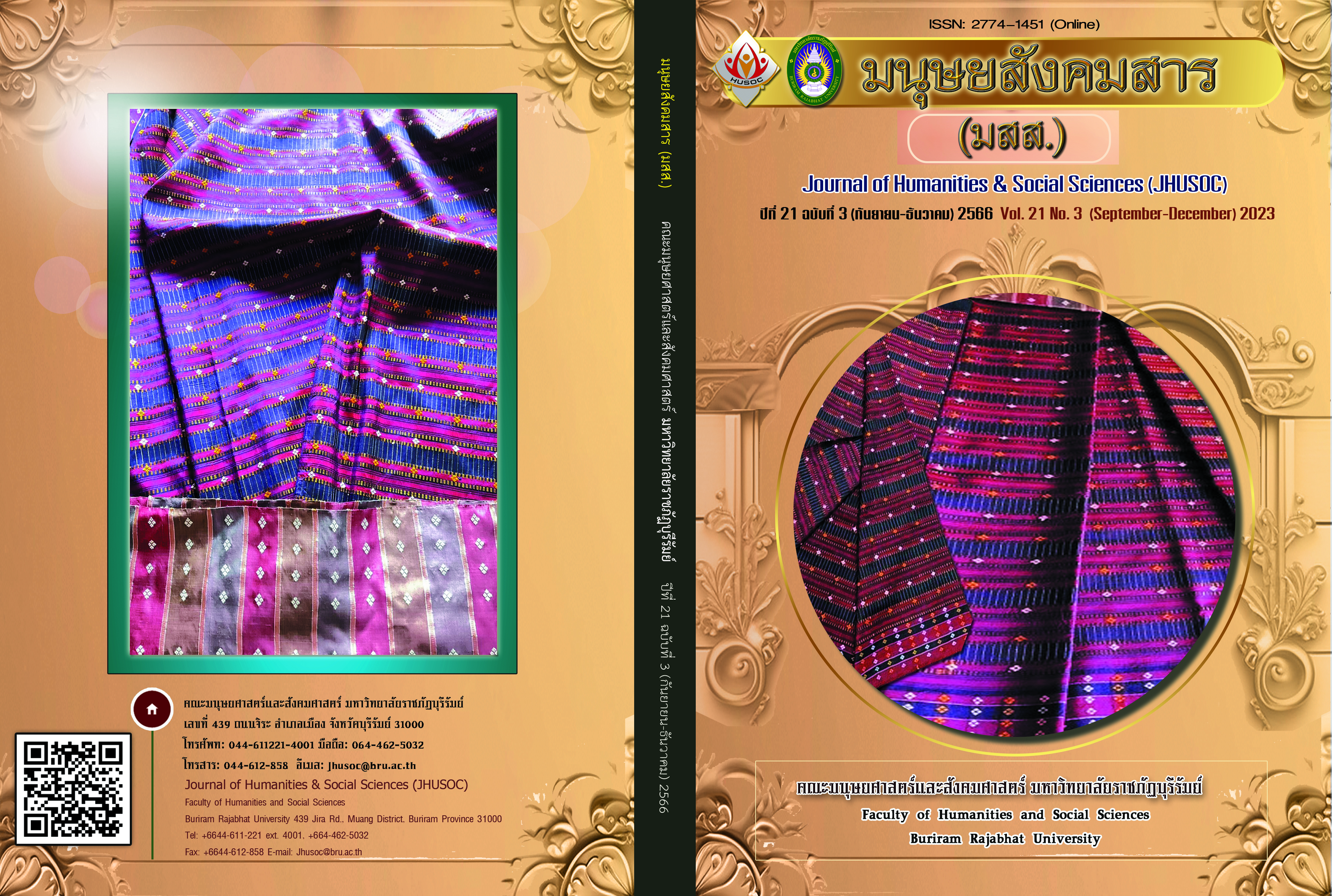การพัฒนากลยุทธ์การบริหารจัดการการท่องเที่ยวทางธรรมชาติ ในพื้นที่มรดกโลกกลุ่มป่าดงพญาเย็น-เขาใหญ่
Main Article Content
บทคัดย่อ
การวิจัยนี้มีวัตถุประสงค์เพื่อพัฒนากลยุทธ์การบริหารจัดการการท่องเที่ยวตามแนวทางของ UNESCO ในพื้นที่มรดกโลกกลุ่มป่าดงพญาเย็น-เขาใหญ่ ใช้วิธีการวิจัยเชิงคุณภาพ ได้แก่ การวิจัยเชิงเอกสารเพื่อรวบรวมข้อมูลการท่องเที่ยว การประชุมกลุ่มย่อยเพื่อรวบรวมความคิดเห็นของผู้มีส่วนได้ส่วนเสีย การใช้เทคนิค SWOT เพื่อวิเคราะห์สถานการณ์ ศักยภาพและโอกาสการพัฒนาการท่องเที่ยวทางธรรมชาติ และแนวทางการแก้ไขการจัดการการท่องเที่ยวของพื้นที่ศึกษา ใช้เทคนิค TOWS Matrix กำหนดแนวทางการพัฒนา และกลยุทธ์การท่องเที่ยว โดยสามารถกำหนดกลยุทธ์ การบริหารจัดการการท่องเที่ยวของพื้นที่มรดกโลกทางธรรมชาติดงพญาเย็น-เขาใหญ่ ได้ 3 กลยุทธ์ ได้แก่ 1) กลยุทธ์การพัฒนาการท่องเที่ยวคุณค่าสูง การสร้างความตระหนักถึงคุณค่า และการกระจายประโยชน์สู่ท้องถิ่น 2) กลยุทธ์การสร้างสมดุลระหว่างการใช้ประโยชน์ทางการท่องเที่ยว และการรักษาคุณค่าความสำคัญของทรัพยากร ระบบนิเวศและสิ่งแวดล้อมที่กำหนดเป็นมรดกโลก และ 3) กลยุทธ์การปรับปรุงการบริหารจัดการและให้ความสำคัญเพิ่มขึ้นต่อการมีส่วนร่วมและการสร้างเครือข่ายความร่วมมือ
Article Details

อนุญาตภายใต้เงื่อนไข Creative Commons Attribution-NonCommercial 4.0 International License.
เนื้อหาและข้อมูลในบทความที่ลงตีพิมพ์ในวารสารทดสอบระบบ ThaiJo2 ถือเป็นข้อคิดเห็นและความรับผิดชอบของผู้เขียนบทความโดยตรงซึ่งกองบรรณาธิการวารสาร ไม่จำเป็นต้องเห็นด้วย หรือร่วมรับผิดชอบใดๆ
บทความ ข้อมูล เนื้อหา รูปภาพ ฯลฯ ที่ได้รับการตีพิมพ์ในวารสารทดสอบระบบ ThaiJo2 ถือเป็นลิขสิทธิ์ของวารสารทดสอบระบบ ThaiJo2 หากบุคคลหรือหน่วยงานใดต้องการนำทั้งหมดหรือส่วนหนึ่งส่วนใดไปเผยแพร่ต่อหรือเพื่อกระทำการใดๆ จะต้องได้รับอนุญาตเป็นลายลักอักษรจากวารสารทดสอบระบบ ThaiJo2 ก่อนเท่านั้น
เอกสารอ้างอิง
Chamnankid, C., & Chamnankid, A. (2015). Creative ecotourism development of Dong Phayayen – Khao Yai natural World Heritage, NRCT. [in Thai]
Department of National Park Wildlife and Plant Conservation. (2006). Ta Phraya national park management plan, DNP. [in Thai]
Department of National Park Wildlife and Plant Conservation. (2023). Data catalog, DNP. [in Thai]
Department of National Park, Wildlife and Plant Conservation. (2020). Tourist statistics in national park year 2020 report, DNP. [in Thai]
Department of National Park, Wildlife and Plant Conservation. (2023). Tourist statistics in national park year 2023 report, DNP. [in Thai]
DNP NEWS. (2022). The Collaboration among DNP, AMATA Foundation and ICCF for Khao Yai National Park Development, DNP. [in Thai]
Khamthong, N., & Lowichakorntikul, P. (2018). The development of Khao Yai national park for sustainable tourism. Environmental Journal, 22(1), 16-24. [in Thai]
Klabsuk, R., & KeawJumpa, N. (2022). Development of tourism management plan based-on recreation carrying capacity at Dong Phrayayen-Khao Yai World Heritage site. NRCT [in Thai]
Lounkaew, K. (2019). Don Phrayayen Khao Yai Forest Complex Tourism, NRCT. [in Thai]
National Park Office. (2006). Dong Phrayayen-Khao Yai World Heritage conservation handbook, DNP. [in Thai]
Jermrod, P. (2022). Implementing the law on the protection of the World Cultural and Natural Heritage of Thailand. Naresuan University Law Journal, 15(1). 1-20. [in Thai]
Phumsathan, S., Pongpattananurak, N., Wudtisin, I., Kheereemangkla, Y., & Ruangrue, S. (2015). Impacts of tourism on a natural World Heritage site: A case study of Thab Lan national park, NRCT. [in Thai]
UNESCO World Heritage Centre. (2013). Sustainable tourism for development guidebook. France.
UNESCO World Heritage Centre. (2019). Operational guidelines for the implementation of World Heritage Convention. France.
UNESCO World Heritage Centre. (2021). UNESCO world Heritage sustainable tourism toolkit.
Wisarttavisit, P. (2006). An evaluation of attraction sites in the world natural heritage Dongphayayen-Khao Yai forest complex area for distributing tourists [Unpublished Master Dissertation]. Srinakharinwirot University.
[in Thai]


